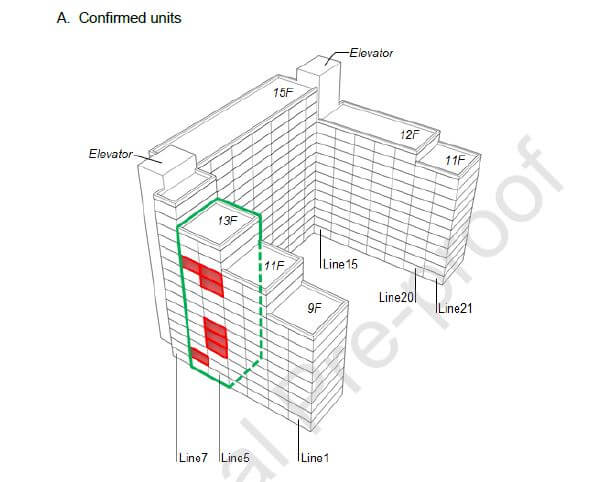A Covid-19 cluster has been linked to an apartment building ventilation duct. In hypothesising aerosol transmission through the duct, researchers also suggest the droplet transmission hypothesis – on which guidelines about 2 metre distance are based – may not tell the whole story.
Can Covid-19 be Transmitted through Ventilation Ducts?
The study, published last week in the International Journal of Infectious Diseases, investigated a cluster of 10 Covid-19 cases in a single building in Seoul. Patient zero was a woman living on the 6th floor, who was diagnosed on 23 August 2020. Her husband and daughter were subsequently confirmed as Covid positive.
The next day, a child living on the 5th floor was hospitalised with a urinary problem and tested positive for Covid-19. Then on 25 August, a woman tested positive on the 4th floor of the building. Korean health authorities then set up a mobile testing facility outside the building, testing all 437 residents, and began investigating the cluster.
More positive cases were identified on the 2nd, 10th and 11th floors. All positive cases denied knowing or having any interpersonal contact with one another. But crucially, all residences were situated on the same vertical line along a ventilation duct.

The building was constructed in the late 80s, and ventilation consisted of simple bathroom fans connecting to an open ventilation shaft. There were no devices fitted to prevent back-drafts of air from one apartment entering another apartment.
Researchers suggested that, in the Korean summer, hotter, daytime air would have forced cooler, indoor air towards the bottom of the shaft. Some of that air passed into apartments on lower floors. Similarly, at nighttime when the air outside was cooler, indoor air would have risen towards the top of the shaft.
This would seem to explain the otherwise peculiar infection transmission chain. It should be noted, however, that swabs of surfaces in the building’s elevators were not taken. We know that lifts can facilitate transmission thanks to a case study from Heilongjiang Province, China, where a woman in self-quarantine started a chain of infection via the building’s elevator.
Lastly, these findings imply that assumptions about droplet transmission do not tell the whole story. While large droplets that fall to the earth within a short distance carry the vast majority of an infected person’s virus particles, this study suggests that aerosol transmission a factor to consider.